Intercostal muscles
Table of Contents
Introduction
Intercostal muscles are many other groups of muscles that run associate the ribs and encourage form and relocate the chest wall. The intercostal muscles are mainly involved in the mechanical regard of breathing by promoting expansion and constricting the size of the chest cavity.
The muscles are innervated by the intercostal nerves, which are branches of the thoracic spinal nerves. Dysfunction of the intercostal muscles can lead to breathing difficulties, chest pain, and other respiratory problems.
The intercostal muscles are a group of intrinsic rib cage muscles that occupy the 11 intercostal capacities. They are divided into three groups, movable from superficial to deep:
- External intercostal muscles
- Internal intercostal muscles
- Innermost intercostal muscles
All three groups of muscles carry the rib cage. In addition, they are all accessory respiratory muscles that cooperate in the action of forced breathing. Specifically, the external intercostals facilitate enforced. inspiration, duration the internal and innermost intercostals assist involuntary movement.
Anatomy
Intercostal muscles are muscles that are present inside the rib cage. Contain three layers of muscles external, internal, and innermost layers they merge to fill the capacity connecting the ribs. The external muscle is the extreme layer similar pretense straight under the skin proceeding from the lower margin of the rib behind running obliquely and inserting into the upper border of the rib below. It expands the chest wall during inhalation. Internal muscle in the intermediate layer arises from the costal groove at the inferior border of the rib and the upper border of the rib below, and assists in to collapse of the Lung during expiration. The innermost muscle crosses one inner space and facilitates the internal and external intercostals in your purpose.
The muscle tightness stretches conforming to the variety and intensity of injury, the tension of intercostal muscles causes rib/chest pain, and upper back pain, and influences the breathing pattern the patient does present with a superficial short breathing pattern due to pain. It is an injury that affects the muscles connecting two or more ribs.
Origin and insertion of Intercostal muscles
There are 11 internal intercostal muscles, as many as the site is intercostal dimension. Every internal muscle fills an intercostal space by extending between the inferior border of the superior rib to the superior border of the first rib below.
The muscles proceed from the inferior margin of the costal cartilage and the inner lip of the costal groove. Their fibers path posteroinferiorly and medially into the insert to the superior margin of the rapid inferior rib. The muscle fibers of all internal muscles fill the intercostal space from the lateral margin of the sternum to the posterior angle of the ribs onto which they attach. At the level of the posterior angle of the rib, the fibers of each muscle blend with the internal membrane, which fills the intercostal space from the aspect of the rib to the spine.
Nerve supply
The external and internal muscles are stimulated by the intercostal nerves (the ventral rami of thoracic spinal nerves), Blood is supplied by the intercostal arteries, and is drained by the intercostal veins. Their fibers run in opposite directions.
Blood supply
The blood supply from the anterior and posterior intercostal arteries costocervical trunk, internal thoracic, and musculophrenic arteries.
Function of Intercostal muscles
The scalene muscles, which relinquish the chest wall or have a function in inhalation, are intercostal muscles, mostly not one of the three principal layers. fundamentally, the intercostal muscles support breathing by controlling the movement of the chest. hence, the external and internal muscles relax contrasting roles. The external muscles help with inhalation during breathing. The muscles contract and shorten elevating and expanding the ribs as lung volume increases.
The activity of exhaling during regular breathing usually does not involve the internal muscles. Alternatively, exhaling is just the external muscles relaxing. The internal muscles are used at exhaling with force. The muscles contract and shorten which conduct the ribs closer together as the lungs decrease in size. The innermost muscles are the weakest of the intercostal muscles and help inhalation even if breathing through contracting the muscles. Once again, in the pilates practice, which focuses on breathing and core work, the intercostal muscles are even exercised and pushed. The internal muscles are engaged in pilates as there is a focus on deep breathing, both inhaling and exhaling.
Structure
There are three principal layers;
External intercostal muscles also intercostalis external assist in quiet and involuntary inhalation. The origin on ribs 1–11 and have their insertion on ribs 2–12. The external muscle is obligated for the elevation of the ribs and bending them more open, therefore developing the transverse extent of the thoracic cavity. The muscle tissue is directed downwards, forwards, and medially in the anterior portion.
Internal intercostal muscles moreover known as intercostalis muscles assist in forced expiration. They originate on ribs 2–12 and retain their insertions on ribs 1–11. Their fibers pass anterior and superior from the upper border of the rib and costal cartilage to the lower margin of the rib above. The internal muscle is responsible for the depression of the ribs and bending them inward, hence diminishing the transverse diameter of the thoracic cavity. The muscle tissue is directed downwards, forwards and laterally producing a right angle connecting external muscle.
The innermost intercostals are the deepest intercostal muscles. They originate beginning at the costal groove of the rib, posteriorly to the origin of the internal muscle. The procedure is anteromedially, in the same approach as the internal muscle, and place to the superior border of the rapid rib below. The vascularization and innervation of the innermost intercostal pathway have the same pattern as the internal muscle. The blood supply arrives from the anterior and posterior intercostal arteries, costocervical trunk, internal thoracic, and musculophrenic arteries. The innervation appears from the intercostal nerves. The portion of the innermost intercostals is to assist in the sorrow of ribs through forced expiration.
Clinical Importance:
Deficient intercostal muscles (e.g. caused by neuromuscular diseases) may not supply an appropriate tension of the intercostal spaces anymore leading to internal and external movements of the chest wall during thoracic pressure different. Consequently, this will direct to respiratory insufficiency. The laceration of a single intercostal nerve (e.g. after trauma or surgical procedures) sources a “strip-like” paresthesia. However, in this exhibition motor impairments are absent.
Intercostal muscle strains are the most usual type of musculoskeletal chest pain. The intercostal muscles are narrow muscles that attach connecting the ribs. During breathing, the external intercostals elevate the ribs while the internal intercostals depress the ribs and decrease the capacity of the thoracic cavity within the ribcage during breathing. As with any more muscle, the intercostal muscles canister enhance strained among sudden or repetitive force, causing pain, tightness, and difficulty with everyday activities.
Intercostal Muscles exercise
There are mainly 2 types of exercise
- Intercostal muscles strengthening exercise
- Intercostal muscle stretching exercise
Intercostal muscle strengthening exercises
The intercostals are short muscles that run joining your ribs and come in two varieties: the internal and external, both involved in respiration. The external intercostals elevate the ribcage and support inspiration, while the internal intercostals depress the ribcage and support forced expiration. Intercostals muscle are acted every day during breathing, but like every other muscle in your body, these muscles also require to be strengthened and stress. Regularly exercising your intercostals will remain the muscles strong and healthy and make breathing during your workouts more efficient.
Barbell Pullover
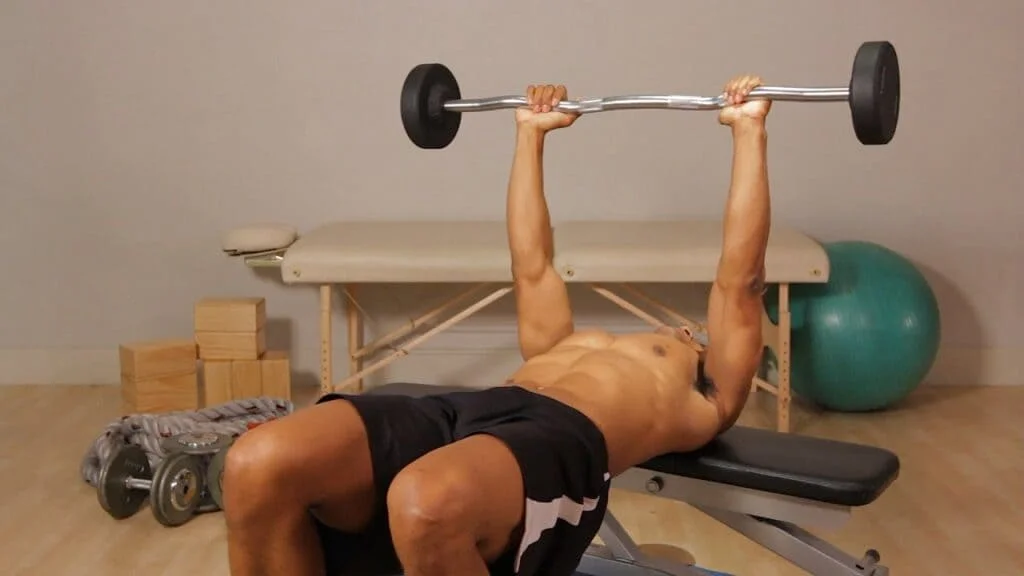
The barbell pullover is an amazing exercise, therefore, developing flexibility and strength in your intercostals. Use only light weights with this exercise, with duration focusing on proper technique and breathing.
How to do Barbell Pullover?
- lie face up on a horizontal bench and hold a barbell vertically above your chest with a shoulder-spread overhand grip.
- Expand your chest as enough as possible as you inhale and lower the bar behind your head, maintaining a slight bend in your elbows. Exhale as you react to the starting position. determine two to three sets of eight to 12 repetitions.
Dumbbell flyes
Intercostal muscle exercise is an important exercise parallel that productively works the muscles in and now your ribcage, mainly helping in increasing thoracic expansion.
How do dumbbells flyes?
- Lie on a limited horizontal bench and hold a dumbbell in each hand with your palms facing in and your arms extended with a slight bend in your elbows.
- Inhale and slowly open your arms horizontally before you feel a stretch through your ribs.
- Raise your arms support to vertical as you exhale.
- Perform two to three sets of eight to 12 repetitions and apply light weights.
Gate pose
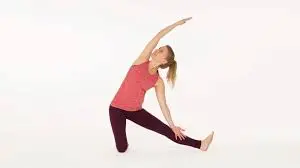
The Gate pose is a yoga exercise that allows you to softly stretch your intercostal muscles and improve lung expansion.
How to do gate pose?
- Begin by kneeling on a bend towel or exercise mat. Stretch your right leg out abroad from your body and position your foot as flat as possible on the floor with your toes pointing out. Inhale deeply as you raise both arms out to your sides.
- Exhale and bend at the waist to reach your right hand down to your right leg while outstretched upward with your left arm.
- Look up at your upraised arm if you container.
- Continue to breathe deeply, and every time you exhale, move a little deeper into the stretch.
- Hold the position for 30 to 60 seconds, then correctly return to the starting position. Recurrent the exercise for your left side.
performance Breathing

Performance breathing is necessary for you to simply breathe and, according to the American Council on Exercise, can improve respiratory muscle strength and endurance as well as improve your performance.
How to perform breathing exercises?
- When practicing breathing techniques, place yourself in a quiet area free of distractions and check that your nose is clear and that you can breathe smoothly.
- Once you are settled, open by inhaling for two counts. Hold your breath for two counts at a time and exhale for four counts.
- Repeat this cycle sometimes. Once you are comfortable breathing this method while sitting, try applying it to exercise.
- For example, inhale for two strides, hold for two strides, and exhale for four strides time jogging. Try increasing the time for each phase as your potential improvement.
Deep breathing
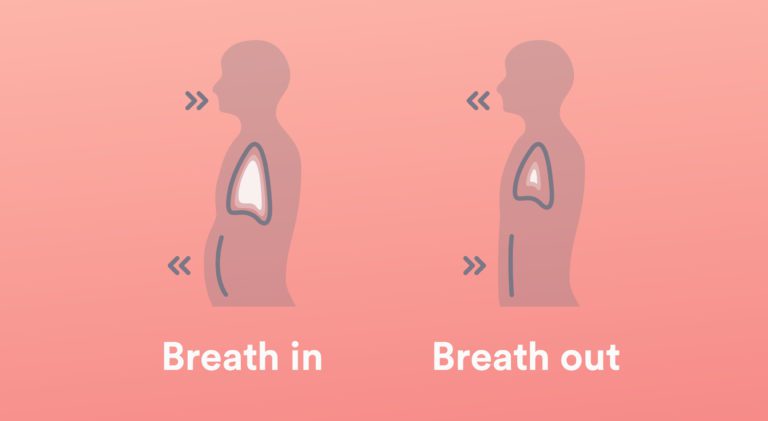
When you feel stressed or anxious, your breath naturally enhances shorter and also rapid. This shallow pattern of breathing only provides feelings of stress, and anxiety diminishes feelings of grounding and centering and effect increased physical tension.
How to do deep breathing?
- Deep breathing exercises can help you attain a greater sense of grounding and relaxation.
- Sit through a chair with your feet horizontal on the ground. Relax your shoulders and arms and relax your hands in your course.
- imagine pulling energy in from the earth and up your spine as you inhale slowly by your nose. Exhale slowly through your nose.
- Repeat this process until you feel calmer, more centered, and relaxed.
Breathing Posture
Before you practice breathing exercises, you must develop the proper posture to authorize for maximal lung capacity use, says Axtell. Using your entire lung capacity support you speak in a calm and relaxed approach, with improved vocal quality. Stand up straight, with your feet slightly alone and your head and neck in line with your spine. imagine someone softly pulling a string on the top of your head to lengthen and extend your spine tall. elevate your rib cage and pull your shoulder blades toward each other without pressing or pulling. Keep your chin raised and your facial muscles relaxed.
Abdominal Breathing Exercise
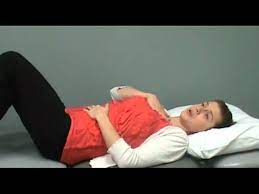
Deep abdominal breathing exercises, also studied as diaphragmatic breathing, can help you get the most out of every breath. By practicing this exercise regularly, you might experience increased feelings of peace, reduced anxiety and stress, and improved stamina. Your energy also helps increase your lung capacity.
How to do abdominal exercise?
- To exercise this technique, stand using the posture method related. position one hand on your stomach and then one else on your chest. Inhale deeply, and visualize that you are filling a balloon in your stomach with air.
- The lower hand should rise at intervals the upper hand should remain relatively immobile.
- Pause for a few seconds, then exhale completely, using a slight abdominal contraction at the close of the breath to free your lungs of air.
Breath Control Exercise
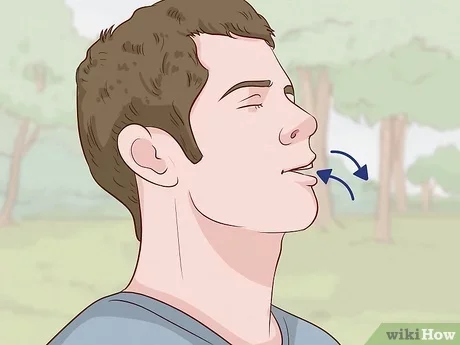
Practice breath control exercises once you’ve acquired the abdominal breathing technique. This exercise container helps you develop better breath control and help you speak with a more effective voice, in accordance with the Department of Speech and Language Therapy.
How to perform breath control exercises?
- Breathe in by way of your nose and out of your mouth for a few seconds.
- Then start to count to three with respect to each in-breath and out-breath.
- Gradually adjust the count by breathing in for two seconds and exhaling for four seconds.
- Experiment with extending your exhalations and shortening your inhalations.
- This most sharply favors the natural breath pattern used during speaking.
Core Benefits
The activity of assembling breathing exercises the muscles of the chest and stretches out the lungs, which supports improved lung capacity and increases oxygen input. Breath stacking as well affects improved airway clearance.
Intercostal muscle stretching exercise
Deep Chest Breathing
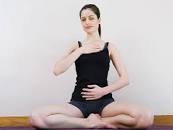
Deep chest breathing is necessary for two yoga blocks.
How to do deep chest breathing?
- You need to sit on the floor and place the blocks behind you – one in a flat position and the alternative in a medium position.
- You require to lay your shoulder blades on the flat block and your head on the other. Then relax your arms away on each side with palms facing upwards.
- Next, you demand to stretch your legs out in front of you. Inhale deeply and allow your chest to thoroughly rise.
- On the exhale, permit your stomach to fall first, then your diaphragm, then your lungs, and ultimately your chest.
- Repeat this exercise nine times with a repeated breath in-between each repetition. Deep chest breathing tones the pair of the diaphragm and the intercostal muscles.
Bellow’s Breath
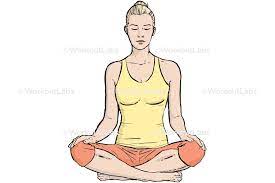
Bellow’s breath is an abrupt withdrawal breathing exercise that is good for the diaphragm muscle.
How to do bellow’s breath?
- To carry out this exercise you require to be in a seated position. Once comfortable,
- you want to inhale naturally through your nose.
- On the exhale you demand to snap your stomach muscles in, forcing the exhalation.
- While in a seated position, inhale basically through your nose.
- On the exhale, snap your stomach muscles in, and obligate the exhalation.
- Repeat this breathing pattern for 30 seconds, moderately increasing the pace.
Intercostal Stretching Breath
To perform an intercostal stretching breath, approach to a standing position and stretch both of your arms over the head. Inhale deeply and on the exhale, elevate your arms to the right, stretching your intercostal muscles on the left side of your body. Inhale and come back to the center; on the next exhale, stretch your arms to the left, feeling your right intercostal muscles actually stretched. Repeat two more times on individual sides.
Focused Diaphragmatic Breath
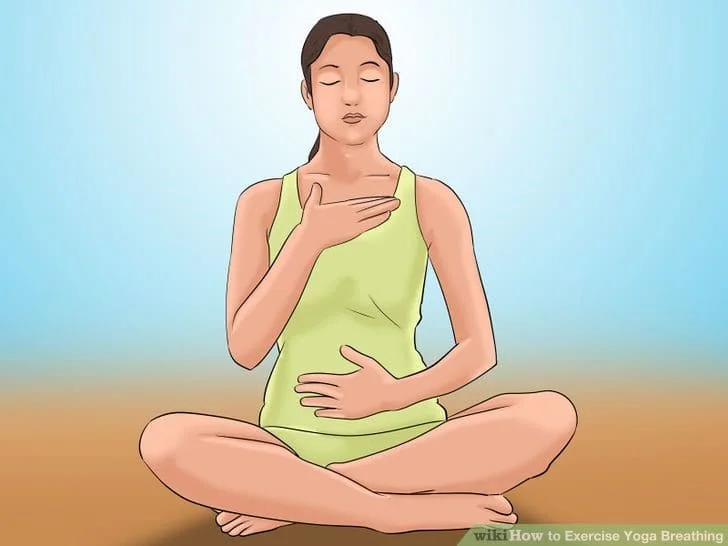
How to do focused diaphragmatic breathing?
- To perform focused diaphragmatic breath, it is considerate to understand exactly where your diaphragm is.
- Hold your fingers and place them on the bottom of your sternum. hold a few breaths and feel your diaphragm move.
- To perform this breathing exercise, tense your stomach muscles and retain your fingers on your diaphragm.
- Inhale and exhale several times, the focal point of that diaphragm’s movement. This exercise can help increase recognition of and tone the diaphragm.
Stretching Intercostal Muscles
The intercostal muscles are the muscles that relate to your ribs. When you breathe, your rib cage is compelled able to expand to accommodate the movement of your lungs. If your rib cage is tight, the quantity of air taken in by your lungs is reduced. Poor posture can usher to tight intercostal muscles. Cough or sneeze to feel these muscles instantly tighten. Stretching exercises, such as yoga poses, and canister support improve the flexibility of your rib cage.
Twist the Torso
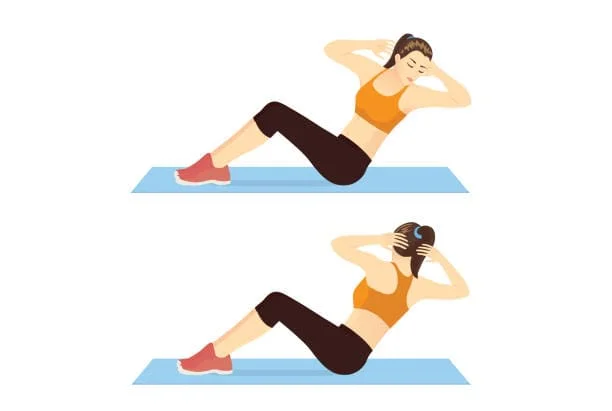
Exercises that necessitate the rotation of your trunk are a sufficient process to stretch your intercostal muscles.
How do twist to the torso?
- For people who practice yoga, their back bends are unfavorably impacted by a tight rib cage. While the structure of your upper back becomes for twisting, the lower back tends to be tighter.
- An example of a core rotation exercise is the sitting envelope, or Marichyasana C. Bend your right leg up and place your right foot excluding your left thigh.
- Keep your left leg straightaway. envelop your left arm around the left knee, taking hold of the left hand with your right hand.
- As you exhale, press the left side of your rib cage as opposed to your left knee. Turn your head and fix your line of sight above your right shoulder.
Stretch the Sides
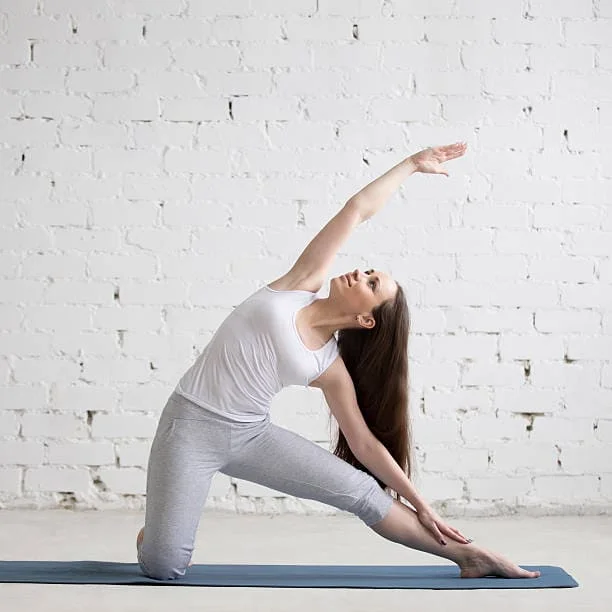
When you accomplish side-bending exercises, you’ll stretch your intercostal muscles.
How do stretch sides?
- The Gate pose does not only lengthen your rib muscles but also stretches your stomach, spleen, and liver. Kneeling on a mat, stretch your right leg to the right side and site your foot flat on the floor.
- remain your left knee aligned below your hip. Fully elevate both arms to the sides, palms turned down. On the exhalation, bend at your waist and lower your right palm to the lower segment of your right leg.
- Stretch and lift your left arm. Each time you exhale, grow the stretch by reaching lower down the leg with your right hand. Grow aware of how your intercostal muscles drag the ribs down on an exhalation and lift them back up on an inhalation.
- control sides to work the intercostal muscles on your right side and achieve a balanced stretch.
Standing Side Stretch
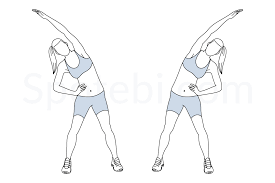
The standing side stretch support opens the sides of your body, focusing on the rib cage and the intercostal muscles, the muscles that run connecting your ribs that help with breathing and rib cage stability.
How to do a standing side stretch?
- Stand with your feet hip-width alone and your arms relaxed by your sides. Inhale and lift your left arm straight up over your head.
- Exhale and skinny over to the right, keeping your hips facing forward and your buttocks tucked under.
- Lengthen your neck and stretch over as far as you can without compromising spinal positioning.
- Hold the produce for a few breaths, focusing on expanding your rib cage. On an exhalation, react to standing and repeat on the opposite side.
FAQs
What are the three intercostal muscles?
The intercostal muscles include three sets of superimposed muscles located connecting adjacent ribs. These sets of muscles involve the external, internal, and innermost intercostal muscles.
What is the function of intercostal muscles?
Function Internal intercostal muscles are the attachment respiratory muscles. At once by the innermost intercostals, they permit forced expiration by depressing the ribs, hence reducing the width of the thoracic cavity and pushing the air out of the lungs.
What is another name for intercostal muscles?
Internal intercostal muscles are also known as intercostalis internal help in forced expiration (quiet expiration is a passive process). They originate on ribs 2–12 and keep their insertions on ribs 1–11.
What happens if intercostal muscles are damaged?
A strain of any of the layers of the intercostal muscle container causes pain and difficulty breathing. Muscle shears are a common cause of chest pain. From 21 to 49 percent of all musculoskeletal chest pain appear from the intercostal muscles.

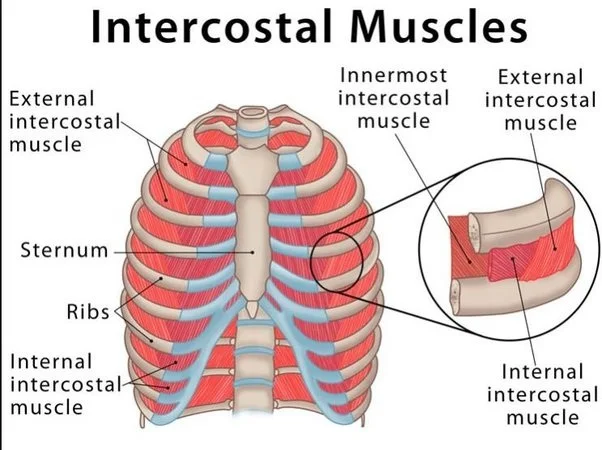
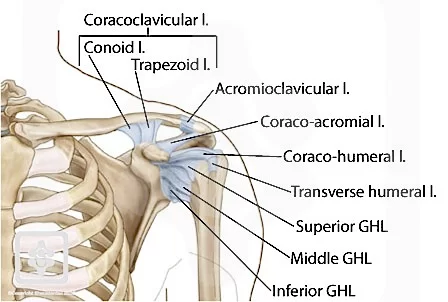
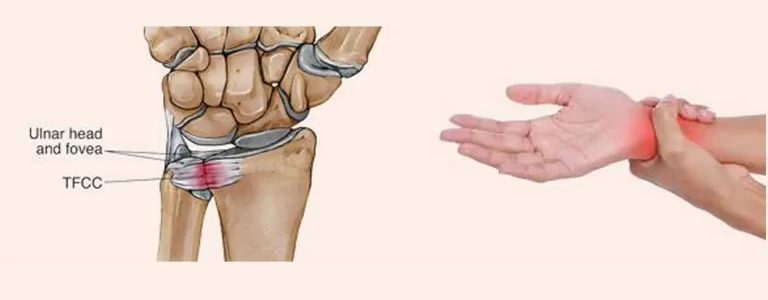
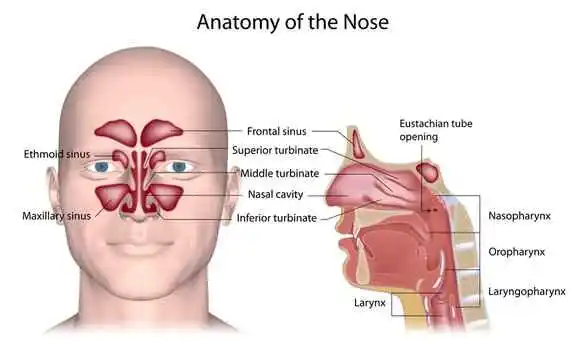
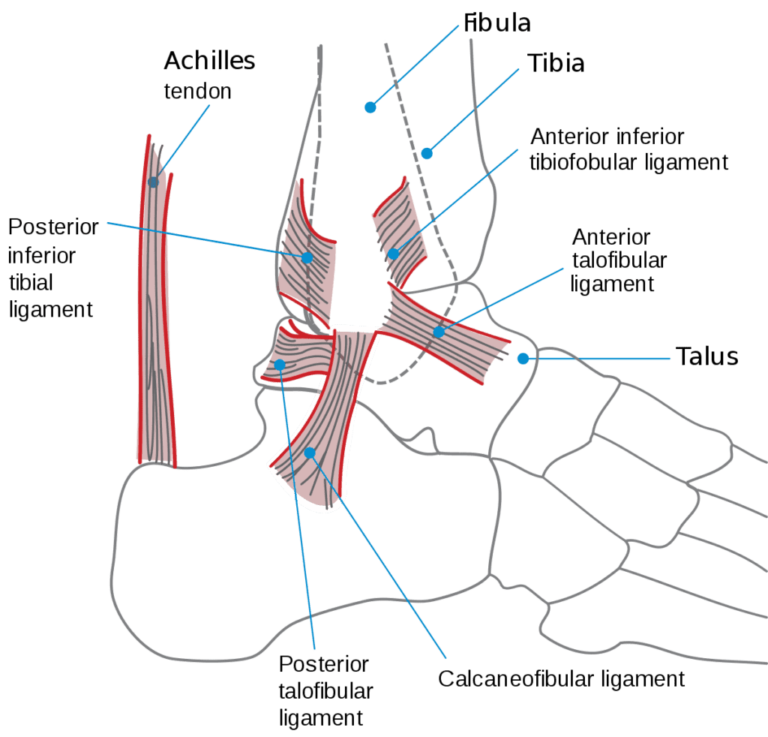
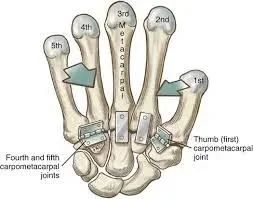
7 Comments